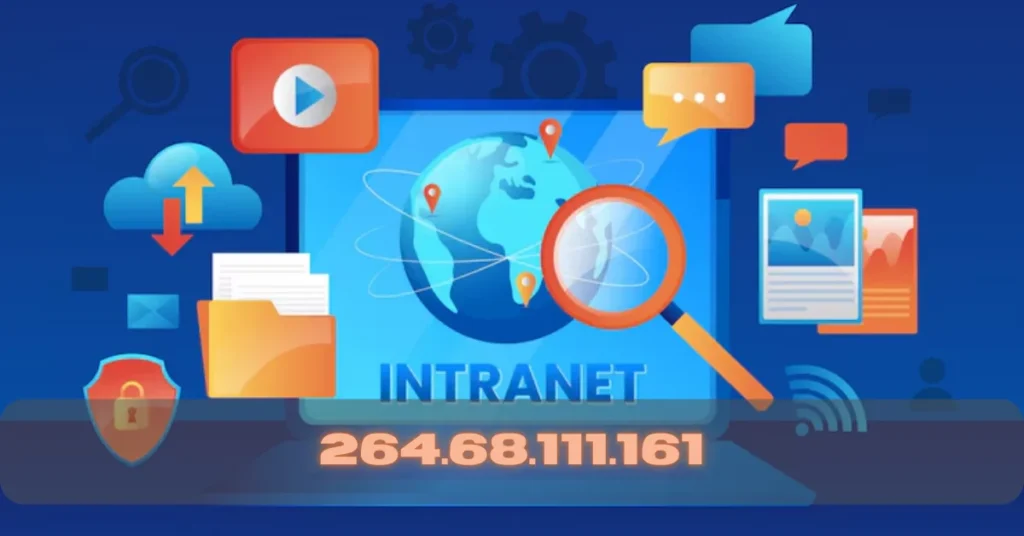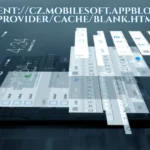Introduction to IP Addresses
What is an IP Address?
Think of an IP address 264.68.111.161 as your digital home address. It’s a string of numbers assigned to every device that connects to the internet. Without it, you couldn’t receive data from websites or send emails. It’s how the internet knows where to send things.
IPv4 vs IPv6
You’ve probably seen IPs like 192.168.0.1 — that’s IPv4, made up of four sets of numbers (each 0–255). But the internet is running out of these, so now we have IPv6, which looks more like 2001:0db8:85a3:0000:0000:8a2e:0370:7334 — a longer, more complex system to accommodate more devices.
Why IP Addresses Matter
Every click, stream, and search starts with an IP. They allow your devices to connect to the right servers, help services customize your content, and play a big role in your security online.
Breaking Down 264.68.111.161
Is 264.68.111.161 a Valid IP?
Short answer? No. The number 264 exceeds the IPv4 limit. Each section (octet) in an IPv4 address must be between 0 and 255. Since 264 is outside that range, 264.68.111.161 is not a valid IP address.
What Makes an IP Address Invalid
It all boils down to the rules of IPv4. If any octet is over 255, contains letters, or has extra periods, it’s invalid. IPs must follow strict formatting, or systems won’t recognize them.
Reserved vs Public IPs
Some IPs are reserved for private networks or special purposes (like 127.0.0.1 for loopback). Others are public, meaning they’re visible to the broader internet. Understanding this helps you grasp how networks and devices interact.
Anatomy of an IPv4 Address
Four Octets Explained
IPv4 addresses are 32-bit numbers, broken into four 8-bit octets. For example, in 192.168.1.1, each number between the dots represents 8 bits. Simple, yet foundational.
Decimal to Binary Conversion
Under the hood, IPs are binary. 192 is really 11000000 in binary. Computers read these numbers in binary, but we humans prefer the easier decimal version.
IP Ranges and Classes
IPv4 addresses are grouped into classes (A to E), each with different uses. Class A is for big networks, Class C for small. This structure keeps global communication organized.
IP Address Allocation
Who Assigns IP Addresses?
Organizations like IANA (Internet Assigned Numbers Authority) and RIRs (Regional Internet Registries) manage global IP distribution. Your ISP gets IPs from them and assigns them to you.
Role of IANA and RIRs
IANA oversees global IP coordination. RIRs like ARIN, RIPE, and APNIC handle regional allocation. Without this structured system, the internet would be chaos.
Dynamic vs Static IPs
Dynamic IPs change regularly — great for privacy. Static IPs stay fixed — ideal for hosting servers. Your home Wi-Fi likely uses a dynamic IP.
The Role of IPs in Your Online Experience
How Browsers Use IPs to Load Websites
When you type “google.com”, your browser translates that to an IP address using DNS (Domain Name System). Then it connects to that IP to load the page. It’s like looking up a contact’s number before calling.
Location Tracking and Geo-targeting
Your IP reveals your general location — country, city, even ZIP code. That’s how websites show you local weather, ads, or services.
IPs and Internet Speed
While your IP doesn’t directly affect speed, your ISP and the IP block you’re assigned can impact connection quality, especially during high-traffic periods.
IP Addresses and Online Privacy
Can Your IP Be Tracked?
Yes — websites, advertisers, even hackers can track you using your IP. It’s not your name or exact address, but it can build a profile of your habits.
How VPNs Mask Your IP
VPNs (Virtual Private Networks) hide your real IP by routing your traffic through another server. It’s like using a different return address on your mail.
Risks of IP Exposure
If a malicious actor gets your IP, they could launch a DDoS attack or try to exploit vulnerabilities. While rare for individuals, it’s still a concern.
Troubleshooting IP-Related Issues
IP Conflicts
Ever seen the message “Another device is using your IP address”? That’s an IP conflict — two devices trying to use the same IP on a network. Restarting your router usually fixes it.
Changing Your IP Address
You can change your IP by restarting your router, contacting your ISP, or using a VPN. Some routers even let you switch IPs via their admin panel.
IP Blacklisting and How to Fix It
If your IP ends up on a blacklist (often due to spam or abuse), you might not access certain sites. You can request removal through blacklist checkers or change your IP.
Future of IP Addressing
IPv6 and the Shortage of IPv4
We’re running out of IPv4 addresses fast. IPv6 solves this with 340 undecillion possible addresses. It’s like switching from street names to galaxies.
Migration Challenges
Moving to IPv6 isn’t simple. Devices, apps, and networks must all support it. That’s why the world is still using both systems — a dual-stack model.
IPs in the Era of IoT
With billions of smart devices joining the web — from fridges to lightbulbs — IP addresses are more vital than ever. IPv6 ensures we’ll have enough to go around.
Conclusion
IP addresses are the backbone of the internet — guiding every digital interaction you make. While 264.68.111.161 isn’t a valid IP, exploring why gives us a clearer picture of how essential these digital identifiers really are. From privacy to connectivity, understanding your IP can unlock a better, safer online experience.






